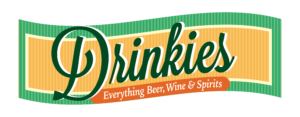In the bustling ambiance of a bar, a seemingly humble yet essential item often goes unnoticed—the bar mat, also know as a bar runner.
This unassuming piece of equipment serves multiple functions, from keeping the bar clean to enhancing the bartender’s efficiency.
Looking into a brief history of bar runners, uses, and materials of bar mats unveils their significance in the world of bartending and hospitality.
The History of Bar Mats
In the 18th century:
- Ginger ales and beers were popular across all social classes.
- Some form of mat or cover was likely used for these drinks.
During this time:
- People used small mats to wipe spills and keep insects out of their tankards.
- This early practice resembled the beginnings of bar mats.
In the 1880s:
- The first cardboard-based beermat was made in Germany by Friedrich Horn.
- These mats were thin and printed with messages.
Shortly after:
- Another German company produced thicker beermats made of liquid pulp.
- These mats were highly absorbent and printable, leading to a patented production process.
In the late 20th century:
- Watney, Combe, Reid & Co. Ltd introduced beermats in the UK.
- These beermats featured colorful designs and became important promotional tools.
Following this:
- Other companies recognized the importance of bar mats for sales and recognition.
- By the mid-1930s, many British companies were mass-producing their own bar mats.
Uses of Bar Runners
Bar runners serve a variety of practical purposes in a bar setting, contributing to both aesthetics and functionality.
Some key uses of bar mats include:
- Spillage Absorption: One of the primary functions of a bar mat is to absorb spills and drips from glasses, bottles, and cocktail shakers. By providing a cushioned and absorbent surface, bar mats help prevent liquid spills from pooling on the bar counter, reducing the risk of slips and falls while maintaining a clean and presentable appearance.
- Glassware Protection: Bar mats provide a soft, non-slip surface for placing glassware, preventing them from sliding or tipping over. This ensures the safe handling of glassware and minimizes the risk of breakage, preserving both valuable glassware and the bar counter surface.
- Drying Area: Bartenders often use bar mats as designated drying areas for freshly washed or rinsed glassware. Placing wet glasses upside down on the bar mat allows them to air dry efficiently while preventing water spots and streaks, ensuring that each drink is served in pristine condition.
- Organization: Bar mats help organize the bartending workspace by delineating specific areas for different tasks and tools. Bartenders often use bar mats to designate spaces for ingredients, garnishes, utensils, and cocktail shakers, streamlining workflow and maximizing efficiency during peak service hours.
- Branding and Marketing: Bar mats present an opportunity for branding and marketing, as they can be customized with logos, slogans, or promotional messages. Branded bar mats not only enhance the aesthetic appeal of the bar but also serve as effective advertising platforms, promoting the bar’s brand identity and reinforcing brand recognition among patrons.
Materials Used in Bar Mats
Bar mats are available in a variety of materials, each offering distinct advantages in terms of durability, absorbency, and aesthetics. Common materials used in the manufacturing of bar mats include:
- Rubber:
- Natural Rubber: Bar mats made from natural rubber provide excellent grip and resilience, making them ideal for preventing glassware from slipping or sliding. Natural rubber mats are durable, easy to clean, and resistant to wear and tear, ensuring long-lasting performance behind the bar.
- Synthetic Rubber (Nitrile Rubber): Synthetic rubber bar mats, such as nitrile rubber, offer enhanced resistance to oils, solvents, and chemicals, making them suitable for use in busy bars and cocktail lounges. Nitrile rubber mats are also non-porous and resistant to microbial growth, promoting hygiene and sanitation in the bar environment.
- Silicone:
- Silicone bar mats are flexible, heat resistance, and non-stick properties. Silicone bar runners provide a soft and cushioned surface for glassware, while their non-slip texture prevents glasses from shifting or toppling over. Silicone bar mats are dishwasher safe and available in various colors and designs, adding a touch of style to the bar counter.
- PVC (Polyvinyl Chloride):
- PVC bar runners are lightweight, waterproof, and easy to clean, making them suitable for use in both indoor and outdoor bar settings. PVC mats feature a textured surface that effectively traps spills and debris, keeping the bar counter clean and dry. Additionally, PVC bar mats can be customized with embossed logos or patterns for branding purposes.
- Fabric:
- Fabric bar mats, such as microfiber or polyester, offer superior absorbency and moisture retention properties. These mats feature a plush and velvety surface that absorbs spills and moisture quickly, preventing liquid from spreading or dripping onto the bar counter. Fabric bar mats are machine washable and available in various sizes and colors to complement any bar decor.
Bar Runners – The Often Forgotten Hero
Bar mats may not be celebrated, but their role in maintaining cleanliness, organization, and efficiency behind the bar is one that cannot be overlooked.
With a rich history dating back to the early days of bartending, bar mats have evolved into versatile accessories that cater to the diverse needs of modern bars and cocktail lounges.
Whether made from rubber, silicone, PVC, or fabric, bar runners offer a combination of functionality, durability, and aesthetic appeal, enhancing the bartending experience and elevating the ambiance of any bar setting.
Check out other types of drinkware and bar equipment.

























